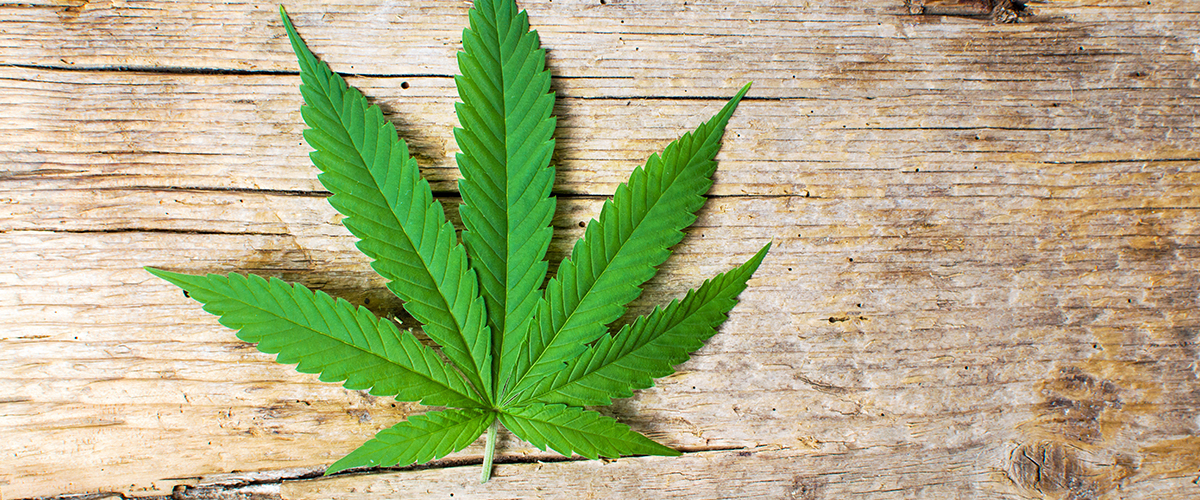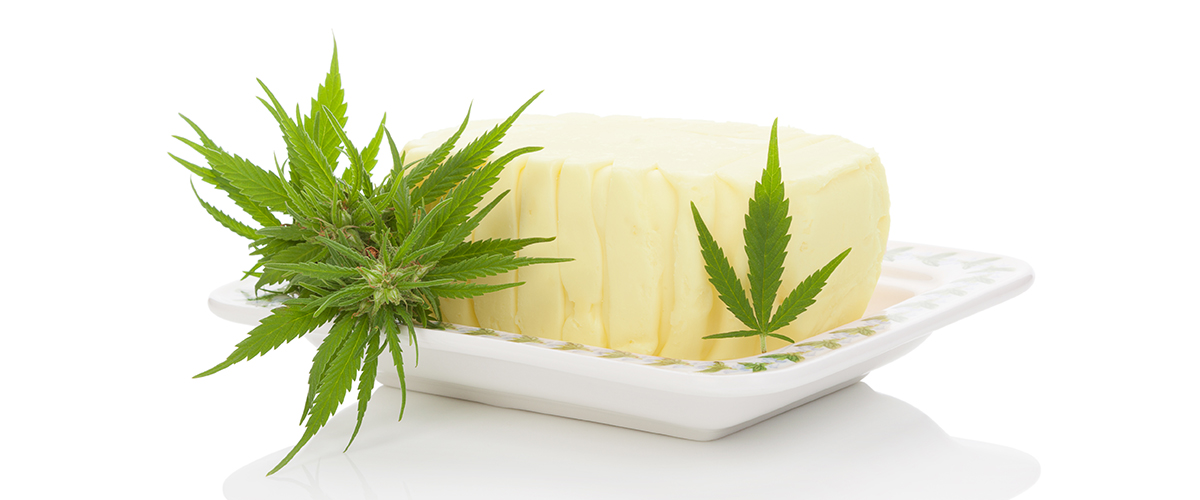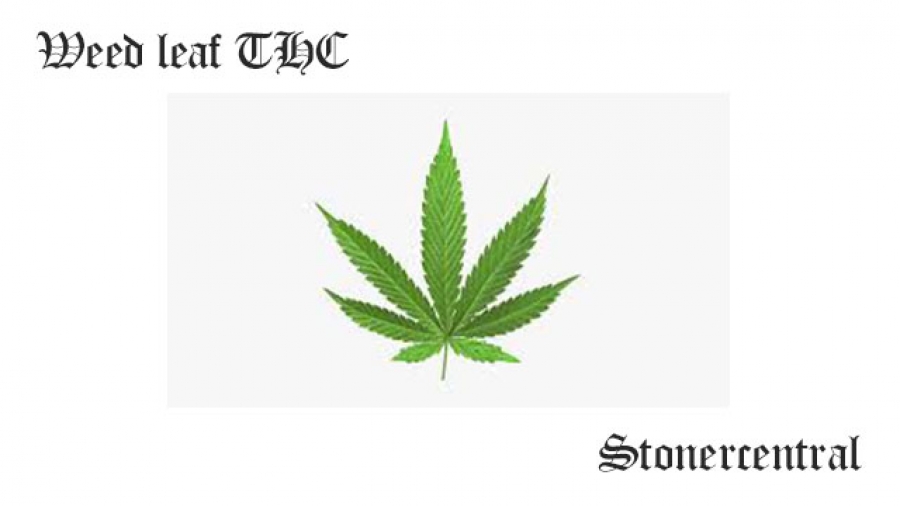Leaves are the primary energy gatherers of the cannabis plant. Green chlorophyll in the leaves helps harvest the sun’s energy, transforming it into vital fuel. Without healthy leaves, the cannabis plant is not able to live up to its full potential.
However, it is the buds of the cannabis plant that are harvested for medical and recreational use, meaning marijuana leaves that are pruned during cultivation and harvest are often seen as a byproduct, rather than a valuable product of the cannabis plant.
Here, we will discuss the various potential uses of marijuana leaves to ensure you are getting the most out of your cannabis plant each and every harvest.

Cannabinoids are all over the plant
The entire cannabis plant, aside from the inside of the stems and the roots, does contain certain cannabinoids. This is due to the fact that the resin glands are all over the plant. Some parts, such as the fan-leaves, only produce/contain trace amounts of the desired CBD and THC cannabinoids. Even though the mentioned glands are also present in this kind of leaves.
There are different types of leaves on the cannabis plant. Everyone who took a closer look at a cannabis bud should have already noticed that they consist of a big portion of trichome sparkled leaves. The leaves surrounding the buds however, are not to be put in the same category as the big fan-leaves when it comes to the contained THC and CBD amounts.
Theoretically it is possible to smoke nearly anything. If you can set fire to it, you can probably smoke it! And as soon as anything else than oxygen enters your lungs, you may very well feel a buzzing effect.
But getting a buzz from smoking whatever burns usually is not due to possible cannabinoids-contents and in general can be risky. Ever heard of Carbon-Monoxide-Poisoning?
Another thing to keep in mind is that cannabis leaves might have been treated with unknown fertilizers so you could be in for a completely unknown and totally risky ride. So if you are not sure how the plant has been grown, you might want to avoid it in general.
It takes a lot of leaves to get high
The leaves of the cannabis plant may contain some interesting cannabinoids, but it will take a lot of it to actually get you high. In general the leaves of the plant contain between 0 and 4% THC and CBD, so just a random handfull might not get you that far.
But if you trimmed your crop and saved up the leaves that were standing out from the actual buds, you may notice that on these leaves and the respective stems there actually are THC trichomes that are even visible to the naked eye.
So, to sum it up: There is a wide spectrum of different leaves. Characterized by the individual plant, the part of the plant the leave grew on and the particular strain, all leaves contain differing cannabinoid-profiles.
Therefore it is very hard to say “if” or “how” high cannabis leaves can actually get you – and of course, your particular tolerance also plays a major role here!
Is smoking cannabis leaves your best option?
Considering the fact that smoking in general can be rough and harmful to the lungs, there definitely are better ways of taking advantage of the possibly rather low cannabinoid-contents of your cannabis leaves.
1. Using a vaporizer
Generally speaking, vaporizing is always a better option than smoking. Because you can control the temperature of a vaporizer, you can control which parts of the plant gets extracted without actually burning it.
If you just set fire to cannabis in a joint, pipe, blunt or bong, you will also set free harmful substances such as tar and other carcinogens. When you simply smoke cannabis by lighting fire to it, 80% of the produced smoke consists of non-psychotropic and medically non-profitable matter.
When you vaporize cannabis at the right temperature though, up to 95% of the vape you ingest actually consists of cannabinoids – these numbers speak for themselves, don’t you think?
Vaporizing your leaves therefore is an excellent option for taking advantage of the contained cannabinoids without exposing yourself to any unknown harm or risk. We can highly recommend this method!
2. Cannabis edibles
Cannabis edibles are getting more and more popular but in this case there is a downside to it. When you ingest cannabis orally, the cannabinoids will not be transported to your endocannabinoid system by the lungs but by the liver.
When cannabinoids are absorbed through the liver, a much smaller amount of the ingested cannabinoids does actually get into the system – in other words, eating cannabis is not the most effective way of consuming cannabis.
Cooking with cannabis is a great option if you have abundance of some high-grade bud you wish to enjoy in some edibles for longer lasting effects and healthier consumption. If you only have low-cannabinoid leaves though, this might not really get to to the state of mind you might be aiming for.
3. Cannabis extracts
If you are still unsure what to do with your leaves and are about to just toss them in the bin, stop right there! That would be a total waste. There is definitely something to be gained from them. A good way to deal with the small amounts of cannabinoids on the leaves is to just extract them.
There are many ways to make cannabis extracts, but the safest and easiest way of extracting the pure cannabinoids from the leaves would to use an Ice-O-Lator hash maker. With this tool, you’ll be able to extract only the trichomes sticking on the leaves and stems from the leaves.
The extracted amount will of course be significantly smaller than when the same methods are applied to regular buds, but still, there is something to be gained. So why not make the effort?
Types of Cannabis Leaves
Before diving into all the exciting ways to use cannabis leaves, let’s start with some marijuana leaf basics.
Many users ask about how many leaves the marijuana plant has. While the number of leaflets (the individual fingers of the leaf) on marijuana leaves may differ depending on the type of cannabis plant, its place in the growth cycle, and more, they will have a odd number of leaflets, with mature leaves displaying serrated edges. Usually the number of leaflets is between 7-9, but some marijuana leaves can have up to 13.
When deciding how to use cannabis leaves, it’s important to first recognize that there are two types of leaves on a cannabis plant – the fan leaf and the sugar leaf. The two types of cannabis leaves have unique features that you may find makes them more ideal for a particular use.
- Fan Leaf: Broad marijuana leaves that shoulder most of the cannabis plant’s light gathering. Cannabis fan leaves are often recognized as the iconic symbol for cannabis. Fan leaves on indica plants are typically darker green with wider “fingers,” while sativa’s fan leaves often are lighter in color with lean, slender “fingers.” Cannabis fan leaves on hybrid cannabis strains generally feature a blend of the two. These leaves are typically trimmed during cultivation and contain low levels of cannabinoids. While they are among the most under-recognized and under-utilized parts of the cannabis plant, cannabis fan leaves are filled with flavor, resin, and phytonutrients that support wellness and health.
- Sugar Leaf: Smaller marijuana leaves that grow close to the cannabis plant’s flowers or “buds” during the plant’s flowering stage. Often times marijuana sugar leaves are hidden, with only their tips peaking through the larger marijuana fan leaves. Marijuana sugar leaves are usually trimmed after harvest to make buds appear more appealing to consumers, either before or after drying and curing. Sugar leaves are typically coated in white, delicious trichomes as if coated with a dusting of powdered sugar, and contain higher levels of cannabinoids than fan leaves.
These two types of marijuana leaves are often discarded, but they can be very valuable for making nutritious and cannabinoid-infused beverages and edibles that you can make at home or to amend previously-used soil to grow strong and healthy plants. Here are 4 healthy and green ways to use your cannabis leaves.
Juicing Raw Cannabis Leaves
The cannabis plant is highly nutritious, containing significant levels of essential vitamins and minerals, omega fatty acids, proteins, fiber, terpenes, flavonoids, and of course, cannabinoids. Raw cannabis fan and sugar leaves are great for upping the nutritional impact of green juices.
When kept fresh and raw (not dried or heated), cannabinoids in the cannabis plant are found in their acid form rather than their “active” form, meaning you will not experience psychoactive effects or a “high” from eating or drinking raw cannabis leaves. Cannabinoids in their acid form, such as THCa and CBDa, provide their own unique benefits through their interaction with the endocannabinoid system.
Cannabis juice can be made at home with any type of blender. The raw cannabis leaves and even buds are first pulverized and then hand-pressed through a strainer or cheesecloth, which separates the pulp from the juice. Alternatively, a home juicer can be used to add marijuana leaves to any preferred juicing blend of fruits or vegetables.

Cannabis Leaf Butter
Although you can make much more potent cannabis-infused butter with the plant’s flowers, marijuana leaves, especially sugar leaves, can also be used to create cannabinoid-infused butter or cannabutter.
To create cannabis leaf butter, you will need to heat your butter and leaves over low heat. This will both decarboxylate your cannabinoids and assist in their absorption into the butter. The same general technique can be used to infuse cannabinoids into oils like olive oil or coconut oil. Once the butter has been strained of the plant material and cooled, it can be spread on toast or used to create any number of cannabis-infused edibles. Try incorporating your cannabis leaf butter into baked goods like brownies, or using it to top baked potatoes or a steak at dinner for a twist on the traditional marijuana edible.
Cannabis Leaf Tea
Marijuana leaves can also be dried and used in teas. Simply add dried marijuana leaves into hot water for a soothing cannabis herbal tea. If you do not enjoy the taste of the cannabis plant by itself, you can add other herbs and botanicals for taste or to draw on the benefits of various herbs.
The psychoactive effects of drinking cannabis tea is often debated. The hot water in tea is not likely to be hot enough to cause decarboxylation, which “activates” THC so that it can interact with the body to cause its euphoric effects.
Additionally, the resin of the cannabis plant, which is what holds cannabinoids, is fat soluble. For the cannabinoids to efficiently produce psychoactive effects, the resin needs to be dissolved into a carrier fat. One way to do this would be to add milk or cream to your tea.
A more effective method might be to heat dried cannabis leaves in some coconut oil. This will extract and amplify whatever cannabinoids happen to be present in the leaves. This cannabinoid-infused coconut oil can then be added to loose leaf tea and used to create tea with activated cannabinoids and a carrier fat to make them more easily absorbed by the body.

I grew my own weed last year (im in Toronto area) i germinated them and everything, started them in my apartment and later on moved them outside… but when i harvested and smoked it, it was the cleanest smoke i have ever tasted, it was by far the best weed i have ever smoked, no pesticides or anything just put them in the dirt, water+sun+love= best weed ever.